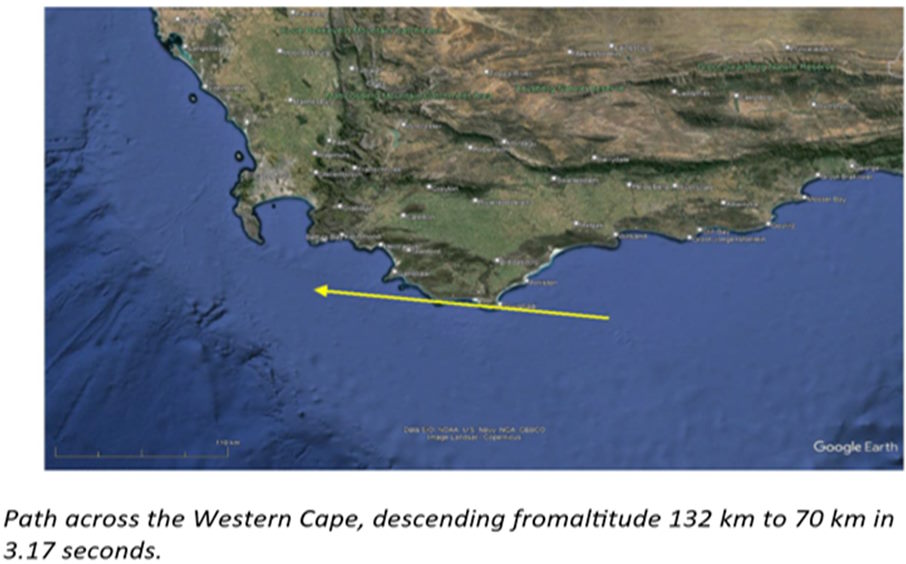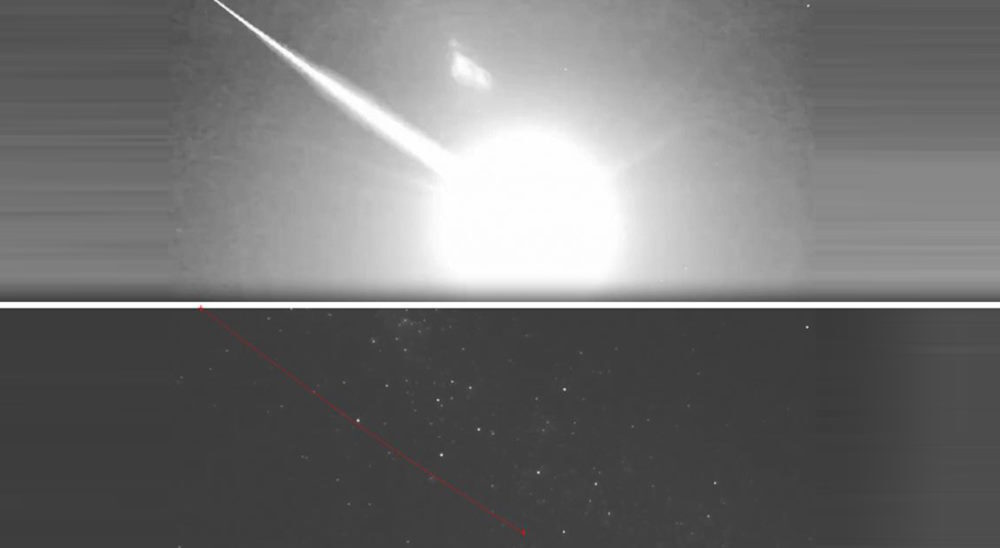What’s happening in the sky?
The outreach project on the Elethu wine farm in Bonnievale involving learners from a local school is yielding fascinating results. In our preceding article “Bonnievale goes intergalactic” we said “watch this space” and they did not disappoint.
One of the meteor cameras installed under the Global Meteor Network (GMN), captured a large fireball off the south coast of the Western Cape at 02:01:57 on 11 February 2024. These cameras were initially installed as part of an outreach programme for Grade 10 and 11 learners from the Bonnievale High School, supervised by Prof Mahomed and Llewellyn Cupido of the Stellenbosch University, Mechanical and Mechatronic Engineering department.
“The meteor entered the atmosphere with geocentric velocity Vg = 61.3 km/sec, and began ablation at altitude 131.947 km above latitude/longitude 34.924619° S, 20.796372° E, and ended at 70.253 km above 34.681514° S, 18.820342° E, with a duration of 3.17 seconds.”
“The path is shown in the figure, commencing due south of Witsand, passed overhead at Struisbaai and ended due south of Pringle Bay, where the bright terminal burst would have occurred 65.2° above the horizon.”
“The orbit is indicative of a cometary fragment from the Oort Cloud”, says Prof Mahomed.
An Oort Cloud is theorized to be a vast cloud of icy planetesimals surrounding the Sun.

Prof Mahomed shares, “Since the light saturated the camera, we superimposed the path on the stars visible immediately prior to the passage of the meteor. Above left are the Diamond and False Cross, at bottom is the bright star Canopus, and bottom right are stars in the hind of Canis Major.”
Canis Major is a constellation in the Southern Hemisphere’s summer (or northern hemisphere’s winter) sky and contains the jewel of the sky, the brightest star Sirius because of its proximity to the Solar System. Canopus, seen in the picture, is a fraction dimmer than Sirius, thus the second-brightest star in the night sky.
The Global Meteor Network cameras were installed as part of an outreach project to give the Breede Valley region an opportunity to develop young engineers and scientists. The outreach is self-funded and made possible by Prof Mahomed who is a full-time lecturer in the Division for Design and Mechatronics. In partnership with Purple Mountain Observatory (a member of the Chinese Academy of Science) and the the Kyldysh Institute of Applied Maths (a member of the International Scientific Optical Network), the objective is to teach learners how to track space objects using optical techniques, and expose them to the field of satellite tracking and space debris.






